The Restoration of a Mural Is the Resurrection of Lost History
Noni Olabisi’s painting "To Protect and Serve"—perhaps the most controversial mural in Los Angeles in the past 80 years—features a positive depiction of the Black Panther Party and its contributions to the African-American community. Such information about the party's constructive role is nowhere to be found in school textbooks.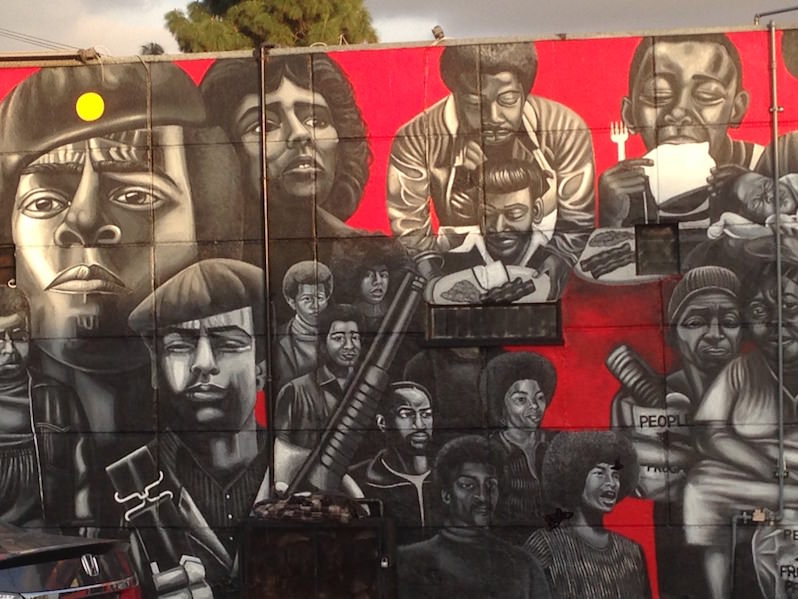 Jenna Berbeo
Jenna Berbeo
Jenna Berbeo
Noni Olabisi’s “To Protect and Serve” — the most controversial Los Angeles mural since David Alfaro Siqueiros’ “America Tropical” — has suffered sun damage, defacements and the shortsightedness of city officials for the past two decades.
But with the completion of a restoration this month, a new generation of viewers will have an opportunity to see this splendid piece of art — located at the corner of 11th Avenue and Jefferson Boulevard, west of downtown Los Angeles.
The steady loss of public art in the city, especially murals — due to damage by weather, vandalism, outright destruction and censorship — is disturbing, especially considering the importance of cultural legacy and the value of political art in the multicultural region.
During the successful 2013-14 campaign to save Paul Conrad’s powerful anti-war sculpture, “Chain Reaction,” in Santa Monica, I wrote two Truthdig articles in support of that effort, the second of which chronicled that disturbing series of losses. Thus, I am heartened to report a significant reversal in the trend.
Last year, the Los Angeles Department of Cultural Affairs provided funding to restore nine murals that the agency had deemed “historically significant.” The Social and Public Art Resource Center (SPARC), in the beachfront Venice neighborhood, originally created the artworks under the Neighborhood Pride Mural program, and all are superior examples of the tradition of American murals and represent the vibrant expressions of the different communities of color throughout the region.
Olabisi’s “To Protect and Serve,” which was completed in 1993, is the most important political mural among those selected for restoration.
It is also one of the most important political murals in Los Angeles since Mexican muralist Siqueiros’ “América Tropical” — which depicts U.S. imperialism in Latin America. (Painted in 1932, that work was whitewashed completely before being restored 80 years later.)
Younger viewers and most others, however, know little of the history of “To Protect and Serve,” which began with a contentious battle with city authorities. Olabisi originally submitted her mural proposal to a SPARC panel — composed of artists, community leaders and scholars — that unanimously backed her design because of its creativity and strong political content.
The design, later replicated in the completed mural, featured sympathetic portrayals of the Black Panther Party leaders Huey Newton and Elaine Brown, and it also depicted the party’s distribution of food, clothing and medical care to needy members of the African-American community.
More controversially, it showed police brutality and a corrupt judicial system, including bloodthirsty Ku Klux Klan members and a bound and gagged Black Panther Party leader, Bobby Seale, during the trial of the Chicago Eight. The images evoked unpleasantly accurate memories of the past. Even more provocatively, the design included a strong black male figure holding a rifle, a quintessential expression of his commitment to self-defense and the protection of his people.
When the panel submitted its recommendation to approve the mural — ordinarily a routine proposition — the Los Angeles City Cultural Affairs Commission, appointed by then-Mayor Richard Riordan, a Republican, rejected the proposal, catalyzing a massive fight against the de facto censorship.
A strong outpouring of community support soon arose, including from representatives of the African-American cultural and religious communities as well as from legal, civil liberties and academic authorities. Olabisi herself also eloquently defended her mural against opposition by the Los Angeles Police Department and opportunistic local politicians.
When Olabisi finally completed the magnificent mural, it swiftly became a source of enormous neighborhood pride, but under severe pressure SPARC decided to remove the painting from its city-funded program because of legitimate fears of longer-term budgetary and political reprisals. But the artwork’s powerful political and historical content has remained inspirational for socially conscious artists nationally and internationally, even after the ravages of weather and human defacement.
In 2016, the newly refurbished mural looked beautiful as Olabisi placed the finishing touches on her masterpiece, which she views as a dramatic visual expression of a history that has been neglected and distorted, particularly in the minds of young people who have little or no knowledge of the Black Panther Party’s contributions.
In a conversation with me the day after she finished her restoration, Olabisi explained her motivation for proposing the painting in the first place.
The Black Panther Party for Self-Defense, as it was originally known, was crucial for the security of the black community, she told me. Because of the party and its members, “I felt safe,” she said, explaining with characteristic passion that “they put their lives on the line” at a time when police were notorious not only for refusing to defend African-American communities, but for serving, in effect, as racist occupying forces. A half-century later, in some American communities, very little has changed.
A close examination of the murals’ details reveals a vision of the Black Panther Party that is typically either twisted in conventional representations in educational and media or is omitted entirely. I know from extensive personal experience teaching at the University of California, Los Angeles, that few students (of all racial backgrounds) have heard of the Chicago conspiracy trial or of Bobby Seale and that few know of the Black Panther programs of free food and health care.
In our conversation, Olabisi reiterated that “her job as an artist is to paint the history on the walls that is not taught in schools.” She recalls how little she had learned about African-American history in her own educational experiences; the only fact she recalled from her school years was that Crispus Attucks, a black man, was the first casualty of the Boston Massacre, before the Revolutionary War. She resolved to use her art to provide a richer, more accurate vision to her audiences.
“To Protect and Serve” joins a longer tradition of community murals that offer historical correctives. Throughout the United States, especially in urban communities of color, murals bring to life episodes of resistance to oppressive institutions of power. They also bring to prominent public attention resistance figures that have been marginalized or neglected in what passes as conventional history. In her other Los Angeles murals, Olabisi depicts African-American composer William Grant Still and African-American journalist Charlotta Bass, both of whom remain unknown even to many ostensibly educated citizens in the region and elsewhere. For many viewers, these vibrant political murals may well be their first exposure to an alternative radical vision that can inspire them to deeper educational achievement — or even to a sense of intellectual curiosity that traditional education often squelches among minority (and other) students.
Olabisi notes that she originally saw her mural as representing many brave young people standing up to injustice and that she continues to believe in 2016 that “it gives them hope.”
Such hope is especially valuable in a time where both overt and institutional racism have been an unusually malevolent feature of contemporary life. In the past two years, we have seen far too many African-Americans murdered at the hands of police officers throughout the nation, with few criminal prosecutions and convictions for the perpetrators. Fortunately, we have also seen a resurgence of social activism, especially in the Black Lives Matter movement that has swept the country in response to the destruction of black lives.
Some of the specific details in “To Protect and Serve” are directly relevant to this welcome new development in the long trajectory of African-American struggle and resistance. The left side of the artwork reveals the racist violence toward black people exemplified by Ku Klux Klan violence that despoiled American life and history for many decades. The mural likewise shows police harassment of a young black man, a reality that has continued unabated since the original creation of the mural. Racial profiling also remains a pervasive reality in contemporary America. Young black and brown men and women alike continue to walk the streets at their own peril, despite official protestations that law enforcement operates in a colorblind fashion, in full compliance with constitutional requirements.
The detail about Bobby Seale being gagged in a Chicago courtroom should catalyze discussion around the continuing injustice against people of color through the courts, especially in disparate sentences and questionable prosecutions for drug offenses. These issues and many more have mobilized people of all races, ages and backgrounds to reinvigorate the historic drive for justice and racial dignity in the United States. The continued overrepresentation of people of color in local, state and federal jails and prisons remains a damning indictment of the judicial system, and the mural addresses this reality in its detail on the Chicago Eight case.
We need more outstanding socially conscious artists like Olabisi and more militant murals to inspire young people who have yet to join their activist peers. The resurrection of “To Protect and Serve” is a hopeful sign that Los Angeles may be reversing its tendency toward cultural indifference and neglect.
However, much more needs to be done, especially if the city is to re-establish its reputation as one of the mural capitals of the world.
Your support matters…Independent journalism is under threat and overshadowed by heavily funded mainstream media.
You can help level the playing field. Become a member.
Your tax-deductible contribution keeps us digging beneath the headlines to give you thought-provoking, investigative reporting and analysis that unearths what's really happening- without compromise.
Give today to support our courageous, independent journalists.
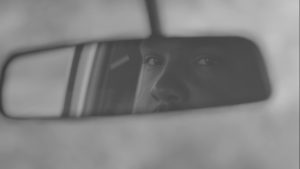
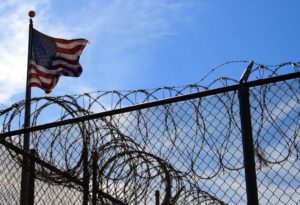
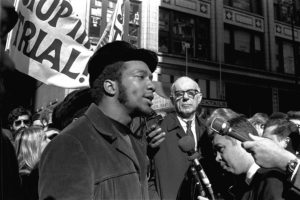
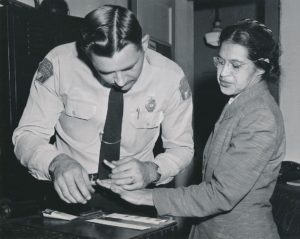

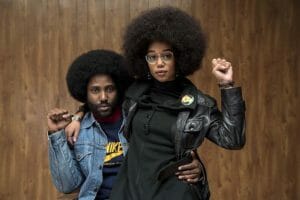
You need to be a supporter to comment.
There are currently no responses to this article.
Be the first to respond.